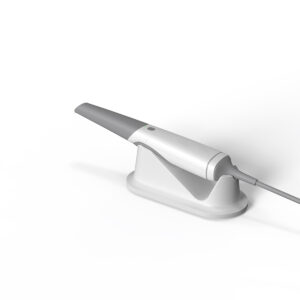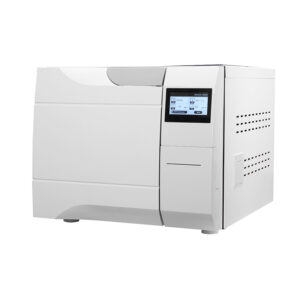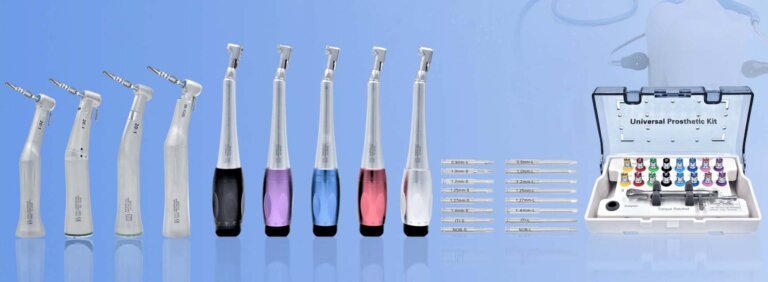Dental X-ray machines are indispensable imaging equipment in oral diagnosis and treatment. They use X-rays to penetrate teeth and jaw tissues to generate high-resolution digital images to assist doctors in diagnosing caries, periodontal disease, root lesions and other problems. Understanding the parts of dental X-ray machine and their function is crucial for optimizing imaging quality and operational safety. Its core components can be divided into the following categories:
1. X-ray generation system
X-ray tube head
Function: core component responsible for generating X-rays. High-voltage electric fields accelerate electrons to hit the target surface (such as tungsten targets) and generate penetrating X-rays.
Technical parameters: Common tube voltage is 55-70kV, tube current is 1.2-8mA, and exposure time is adjustable (such as 0.1-4 seconds).
Protection design: Some models are equipped with collimators and aluminum filters to reduce scattered radiation and limit the irradiation range (such as 60-70mm wire shielding tubes).

High-voltage Generator
Function: Provides a stable high-voltage power supply for the X-ray tube, usually using high-frequency DC technology to improve energy efficiency and imaging quality.
Portable design: Some models integrate batteries (such as 14.8V lithium batteries), support wireless operation, and are suitable for mobile diagnosis and treatment.
2. Control System
Control Panel
Function: Adjust X-ray parameters (such as voltage, current, exposure time), set imaging mode (full mouth, bite wing, etc.), and provide real-time feedback of operation information through the LCD screen.
Some equipment provides doctors with an exposure remote control to operate at a safe distance.
Exposure Controller
Function: Accurately control the emission time and dose of X-rays to ensure that the radiation dose meets national standards (such as leakage radiation ≤0.002mGy/h).
3. Mechanical support and positioning system

Arm and Support Structure
Function: Support the X-ray tube head, and achieve flexible angle adjustment (such as vertical and horizontal rotation) through multi-joint design (such as telescopic arm, spring lever) to adapt to the body position requirements of different patients.
Positioning assistance: Some models are equipped with positive and negative digital markers to ensure the accuracy of the projection angle.
Cephalostat
Function: Used for X-ray cephalometric measurement, fix the patient’s head through earplugs and orbital point pointers to ensure the standardization and comparability of images.
4. Image acquisition and processing system
Image Receptor
Function: Receive X-ray signals after penetrating tissues. Traditional equipment uses film, and modern models mostly use digital sensors or flat-panel detectors to directly generate digital images.
Resolution: High-resolution sensors can display details such as enamel microcracks and apical lesions, improving diagnostic accuracy.
Image processing software
Function: Enhance, reduce noise and reconstruct images in three dimensions, support multi-mode imaging (such as curved body slices, mandibular cross-sections).
5. Radiation safety and protection devices

Lead shielding
Function: Built into the X-ray tube head housing to reduce radiation leakage and protect medical staff and patients.
Protective cover and beam limiter
Function: Portable models are often equipped with removable protective covers to limit the irradiation range of the X-ray beam and reduce scattered radiation.
Features of different types of dental X-ray machines
Fixed: Suitable for high-frequency examinations, which supports wall-mounted or floor-standing installation and has high stability.
Portable: Portable dental X-ray machines are lightweight, space-saving, and provide quick, high-quality images for accurate diagnosis. They offer advanced radiation control and are cost-effective for small clinics or mobile practices.
Digital upgrade: Some models support wireless connection with sensors to achieve real-time image transmission and storage.
Clinical application and selection recommendations
Diagnostic scenarios: Periapical films are used for single-tooth examinations. Bitewing films are used to evaluate interproximal caries, and curved body films display the entire dentition and jaw structure.
Key points for purchase: Comprehensive consideration of resolution. Radiation safety (such as compliance with GB 9706 standards), and brand after-sales service (such as Jumu Medical provides a 1-year warranty and nationwide joint warranty).








